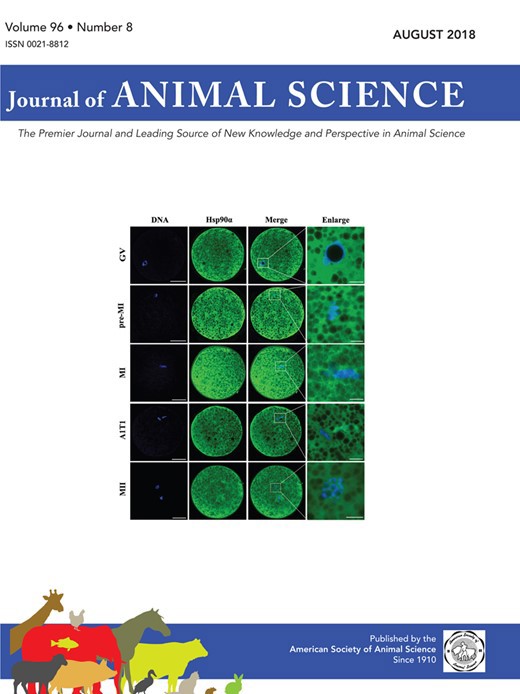Supplementation with organic acids showing different effects on growth performance, gut morphology, and microbiota of weaned pigs fed with highly or less digestible diets
Shuang Li,* Jie Zheng,* Kai Deng,* Ling Chen,* Xilun L. Zhao,* Xuemei Jiang,* Zhengfeng Fang,* Liangqiang Che,* Shengyu Xu,* Bin Feng,* Jian Li,* Yan Lin,* Yuanyuan Wu,† Yanming Han,† and De Wu,*
* Key Laboratory for Animal Disease Resistance Nutrition of the Ministry of Education of China, Animal
Nutrition Institute, Sichuan Agricultural University, Chengdu 611130, China; and
† Trouw Nutrition R&D, Stationsstraat 77, 3800 AG, Amersfoort, The Netherlands
1 The authors would like to thank Trouw Nutrition R&D for financial support of this study. The work was also supported by Program for Changjiang Scholars and Sichuan Province “135” Breeding Tackle Project (Project no. 2016NYZ0052).
Journal of Animal Science, Volume 96, Issue 8, August 2018, Pages 3302–3318, https://doi.org/10.1093/jas/sky197

Abstract
Two studies were conducted to evaluate the effects of organic acid (OA) supplementation in a highly digestible (Exp. 1) or a less digestible diet (Exp. 2) on the growth performance and intestinal health of weaned pigs. In Exp. 1, a total of 240 pigs weaned at day 21 were assigned to one of five dietary treatments: negative control (NC) (basal diet, 3,000 ppm zinc oxide (ZnO) in the first 2 wk only); positive control (PC) (NC plus 10 mg/kg zinc bacitracin, 5 mg/kg colistin sulfate, and 5 mg/kg olaquindox); OA1 (NC plus a 0.2% blend of encapsulated butyrate, medium-chain fatty acids [MCFA], OA, and phenolics); OA2 (NC plus 0.3% blend of free and buffered short-chain fatty acids [SCFA] combined with MCFA); and OA1 plus OA2 (NC plus 0.2% OA1 plus 0.3% OA2) for 49 d. All treatments in Exp. 1 used the same highly digestible basal diet. At day 28, eight pigs from each group were sacrificed, to collect intestinal and digesta samples for biochemical analysis. Growth performance and intestinal morphology were not affected by the treatments. However, pigs subjected to the OA2 treatment had lower levels of Escherichia coli (P < 0.05) in the colon. In addition, the OA1 and OA2 treatments, and their combination resulted in higher concentrations of acetate and propionic acid in the cecum and colon (P < 0.01) in comparison to the NC. A less digestible diet without high levels of ZnO was used in Exp. 2. A similar design was used with the exception of the replacement of OA2 with another OA blend (OA3, a blend of free and buffered OA). In comparison to the NC, supplementation with OA1 and OA3 in a less digestible diet improved the ADG and the F:G ratio in the seventh week post-weaning (P < 0.01); reduced the diarrhea index of pigs during the first 3 wk post-weaning (P < 0.05); increased the ileal villus height (P < 0.05), and acetic and propionic acid concentrations in colon contents (P < 0.05). Moreover, the genus Prevotella was increased in the colon and the microbial community structure was significantly altered in the OA1 + OA3 treatment. The present research indicated that dietary supplementation with OA improved intestinal health. The OA blends showed a similar growth-promoting effect as antibiotics in the less digestible diet, to which high levels of ZnO had not been added.
Keywords: intestinal morphology, microbiota composition, organic acids, weaned pigs